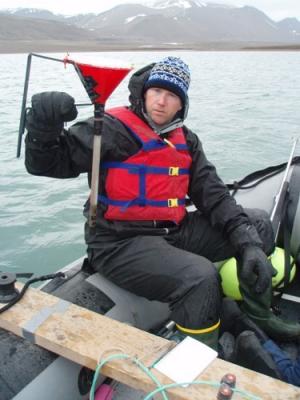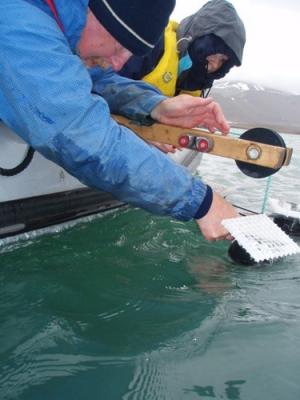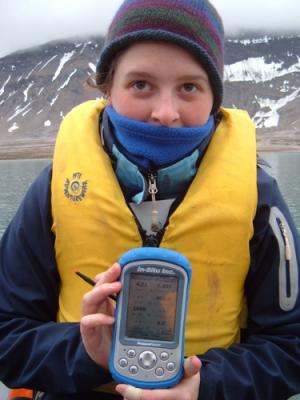
Sunday, July 22.
Having located many of the buoys for the sediment traps Saturday afternoon, we set out to recover the traps on Sunday. This is difficulty work due to the icy water conditions. The boat is out fitted with a boom with pulleys that the rope attached to the traps must be guided too as you hang off the side of the boat (torso only). The next step is to pull several meters of the rope until the top of the sediment trap is above the surface. The boom is only about a foot above the water so much of the trap is still in the water when it reaches the boom. Pulling the rope is no easy task because it is anchored by a massive rock to keep it in precise location throughout the year. When the trap is at the boom, you must cut the ties that attach the trap to the rope. This requires plunging your arm into the arctic, icy water with a pair of wire cutters. This is uncomfortable to say the least and when your arm and hand goes numb, you cannot feel the wire cutters in your hand so it is very easy to drop the cutters, or much worse, having cut the ties loose the trap to the bottom of the lake. Considering the time energy and especially data represented by these traps, loosing one would be a great loss. Fortunately, this did not happen this year. Mike Retelle and I worked together with excellent team work pulling the traps to the surface, retrieving the traps and finally muscling the rock anchor up into the boat. The traps were then carefully transferred in a vertical position, as to not upset the vertical sediment profile, to Al’s student Patti who is working on creating quantifiable analyses of the profiles for her thesis. This was a satisfying and productive day for me as I was able to provide the team with difficult and valuable work.




Comments